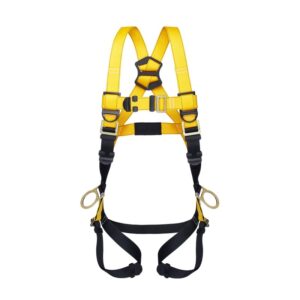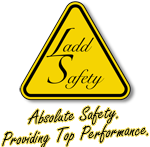Memphis Fall Protection Equipment

Fall protection equipment plays a crucial role in ensuring the safety of workers in various industries. In Memphis, where construction and industrial activities are prevalent, having reliable fall protection equipment is of utmost importance. This article will explore the significance of fall protection equipment in workplace safety in Memphis, highlight the key components of such equipment, discuss different types available, offer guidance on selecting the right equipment, provide insights on proper use and maintenance, and touch upon regulatory compliance relating to fall protection equipment.
Understanding the Importance of Fall Protection Equipment
Fall protection equipment is designed to prevent or arrest falls, minimizing the risk of serious injuries or fatalities. With falls being a leading cause of workplace accidents, incorporating fall protection measures has become paramount in ensuring employee well-being and complying with safety regulations. By implementing and utilizing the appropriate fall protection equipment, employers can significantly reduce the likelihood of falls and enhance workplace safety.
The Role of Fall Protection in Workplace Safety
Workplace safety revolves around preventing accidents and minimizing hazards. Fall protection is a fundamental aspect of workplace safety, as it addresses a significant risk factor encountered by workers in various industries. By implementing appropriate fall protection measures and providing workers with the necessary equipment, employers demonstrate their commitment towards creating a safe and secure working environment.
When it comes to fall protection, it is crucial to understand that accidents can happen in any industry or work setting. From construction sites to manufacturing plants, from warehouses to utility maintenance, workers face potential fall hazards daily. Therefore, having a comprehensive fall protection program in place is essential to safeguard employees and prevent life-altering injuries.
Key Components of Fall Protection Equipment
Fall protection equipment consists of several key components, each serving a specific purpose in ensuring the safety of workers. Some of the essential components include:
- Anchorage Points: These secure points are fixed structures to which workers can attach their fall protection equipment. Anchorage points are strategically placed to provide maximum support and stability, ensuring that workers can perform their tasks without the fear of falling.
- Body Harness: A body harness distributes the impact forces of a fall across the wearer’s body, minimizing the risk of injury. It is designed to fit comfortably and securely, allowing workers to move freely while maintaining their safety.
- Lanyards: Lanyards connect the body harness to the anchorage point, providing a secure link between the worker and the safety system. They are available in various lengths and configurations, allowing workers to choose the most suitable option for their specific job requirements.
- Lifelines: Lifelines are flexible ropes or cables that can be attached to an anchorage point and provide workers with a means to move safely in elevated work areas. They act as a lifeline, allowing workers to maintain balance and stability while performing tasks at height.
Additionally, fall protection equipment may also include other components such as self-retracting lifelines, shock-absorbing lanyards, and harness accessories. These additional features further enhance the safety and functionality of the fall protection system, ensuring that workers have the necessary tools to perform their duties confidently and securely.
It is important to note that fall protection equipment should be inspected regularly to ensure its effectiveness and compliance with safety standards. Regular maintenance and proper storage of the equipment are crucial to prolong its lifespan and maintain its reliability.
Types of Memphis Fall Protection Equipment
Memphis offers a wide range of fall protection equipment catering to various industries and work environments. Understanding the different types of fall protection equipment can help employers make informed decisions regarding their specific safety needs. Some common types of fall protection equipment in Memphis include:
Harnesses and Lanyards
Harnesses and lanyards are critical components of fall protection systems. Harnesses, usually made of durable materials like polyester webbing, provide full-body support and distribute the forces of a fall. Lanyards, which are attached to the harness and anchorage point, serve as the connecting link between the worker and the fall protection system.
Anchorages and Lifelines
Anchorage points serve as secure connections to which fall protection equipment, such as lifelines or lanyards, can be attached. These points must be strong enough to withstand the forces generated during a fall, ensuring the worker’s safety. Lifelines, on the other hand, offer workers a secure and controlled path while working at heights, enabling them to move freely while reducing the risk of falls.
Fall Arrest Systems
Fall arrest systems are designed to safely arrest falls and prevent workers from hitting the ground or other surfaces. They typically include shock-absorbing lanyards, connectors, and body harnesses, all working together to minimize the force experienced by a falling worker.
Selecting the Right Fall Protection Equipment
Choosing the appropriate fall protection equipment requires careful consideration of various factors to ensure maximum effectiveness and compliance with safety standards. Some essential considerations include:
Considerations for Choosing Equipment
When selecting fall protection equipment, employers should consider factors such as the specific work environment, the nature of tasks performed, the frequency of use, and the potential hazards workers may encounter. Conducting a thorough risk assessment is essential to determine the most appropriate equipment for the job.
Understanding Equipment Ratings
Fall protection equipment undergoes rigorous testing and certification processes to ensure compliance with safety regulations. Employers must familiarize themselves with equipment ratings and certifications to ensure they select products that meet the required standards. Understanding the limitations and intended use of each piece of equipment is crucial for maintaining worker safety.
Proper Use and Maintenance of Fall Protection Equipment
Having the right fall protection equipment is only part of the equation. Proper use and regular maintenance are equally important to ensure the equipment remains effective and reliable. Employers must prioritize training and education on safe equipment usage and implement protocols for regular inspection and maintenance.
Training for Safe Equipment Use
Providing comprehensive training on the correct use of fall protection equipment is essential. Workers should be educated on how to properly wear harnesses, attach lanyards, and operate other components of the fall protection system. Training should also cover emergency response procedures and the importance of continuous vigilance when working at heights.
Regular Inspection and Maintenance
Regular inspection and maintenance of fall protection equipment are crucial for identifying and addressing any damage or wear that may compromise safety. Employers should establish a documented inspection schedule and ensure adequate resources are allocated to maintain and repair equipment as needed. Inspection records should be kept on file to demonstrate compliance and track maintenance efforts.
Regulatory Compliance for Fall Protection Equipment
Fall protection equipment regulations are set forth by regulatory bodies to ensure consistent safety standards and protect workers from falls. The Occupational Safety and Health Administration (OSHA) plays a vital role in establishing guidelines and enforcing compliance with fall protection regulations.
OSHA Standards for Fall Protection
OSHA’s fall protection standards provide clear requirements for employers to follow in order to protect workers from falls. These standards outline the design, selection, and usage criteria for fall protection equipment. Employers must familiarize themselves with these standards and ensure their compliance to avoid potential penalties and, more importantly, to safeguard the well-being of their workforce.
Ensuring Compliance with Safety Regulations
Complying with safety regulations is not only a legal necessity but also a moral obligation. Employers should regularly review and update their fall protection programs to ensure alignment with the latest regulations. This includes conducting risk assessments, investing in appropriate equipment, providing adequate training, and consistently monitoring and maintaining safety standards.
Conclusion
Memphis fall protection equipment is an essential tool in promoting workplace safety and reducing the risk of fall-related accidents. By understanding the importance of fall protection, recognizing the different types of equipment available, selecting the right equipment, promoting proper use and maintenance, and ensuring compliance with safety regulations, employers can create safer work environments and protect their most valuable asset, their workers.
At Ladd Safety, we understand the critical importance of fall protection equipment in maintaining a safe workplace, especially in the industrious heart of Memphis. Upholding our commitment to local businesses and the Mid-South, we believe that every worker in the manufacturing industry deserves the right to perform their duties safely. Jessica Ladd, our dedicated Safety PPE Specialist and Memphis native, prioritizes the safety of your employees by resolving PPE issues with expertise and care. We offer customized safety solutions to meet your specific needs, including a wide range of janitorial and breakroom supplies, as well as comprehensive first aid options. Trust in the major brands we carry and our extensive knowledge as Memphis area experts. Enhance your workplace safety today and Shop Now!


